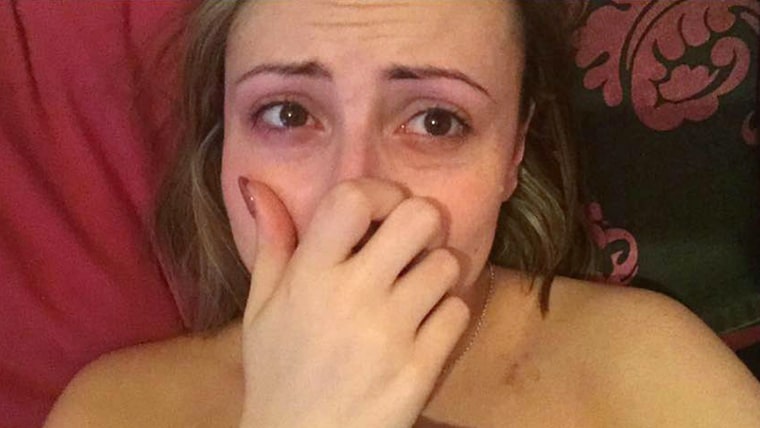Like many social media users, Amber Smith normally posts filtered images that find her wearing perfect makeup and cute clothes while flaunting her beautiful hair. But Smith recently decided to share another slice of her life —a photo she snapped of herself looking tearful and scared after experiencing a panic attack.
In a Facebook post shared almost 20,000 times, Smith says the distressed photo is just as real to her as those well-composed pictures. She also expresses frustration over how some people treat those with mental health issues.

“I'm so sick of the fact that it's 2016 and there is still so much stigma around mental health. It disgusts me that so many people are so uneducated and judgemental [sic] over the topic,” wrote the 22-year-old from Rugby, England.
Smith's frustration is understandable.
“[Stigma] is a general problem in mental health,” says Dr. Ken Duckworth, medical director of National Alliance on Mental Illness.
“She should be saluted for having the courage to engage in the conversation. This is happening to her. This is the ordinary part of the human condition.”
RELATED: What to say (and not say) to someone who is depressed
What are panic attacks?
Most people experiencing panic attacks suffer from panic disorder, which falls under the umbrella of an anxiety disorder.
“Panic disorder is really the fear of recurrent panic attacks,” says Scott Bea, a clinical psychologist in the Center of Behavioral Health at Cleveland Clinic. “A true panic attack is like a bolt of lightning out of a blue sky. It is really unexpected and accompanied by intense physical symptoms.”
According to the National Institute of Mental Health, about 2.7 percent of the U.S. population experienced panic disorder within the past year and about 4.7 percent of the population will experience it in their lifetime, says Frank Ghinassi, vice president and director of the Department of Psychology at UPMC’s Western Psychiatric Institute and Clinic.
RELATED: Watch the soothing GIF that will help you relax in minutes
The cause of panic disorder remains unknown but there’s a genetic link. Panic attacks last anywhere from a few minutes to a couple of hours.
“In the middle of the attack…there is an overwhelming sense of danger and it seems unrelated to something in the environment,” Ghinassi says.
Many people experiencing panic attacks believe they’re dying. Some symptoms mimic those of a heart attack — shortness of breath, numbness in fingers or toes, heart palpitations, tightness in the chest, and sweating.
And while Smith’s post-panic attack face expresses fear, often there's no way others can tell someone’s experiencing a panic attack just by looking at them.
“I don’t think there is a specific look. They are extremely distressed. They think they are dying. They think they are going ‘crazy,’” Duckworth says.
How to help
While panic attacks feel very intense and scary for those experiencing them, other people can help. Experts recommend:
- Making eye contact: Looking you in the eye is a useful distraction that "keeps them from being self-aware,” says Bae.
- Empathizing with them: Duckworth suggests saying, "Let me sit with you, reassure you, support you." Ask what they need to feel better.
- Refocusing their attention: Bea recommends asking them to describe their symptoms. Describing their experience will help them feel more grounded. Ghinassi recommends asking them to breath with you. This slows their breathing and allows them to feel as if they’re regaining control.
In her Facebook post, Smith urges others to reach out if they need help.
“To anyone who is going through the same, please do not suffer in silence. There is so much support around — Don't be scared to ask for help.”
And the experts agree. Talk therapy, cognitive behavioral therapy, and medications combined make panic disorders manageable.
“If they seek care, they will experience improvement,” says Ghinassi. “They do not need to continue to suffer.”